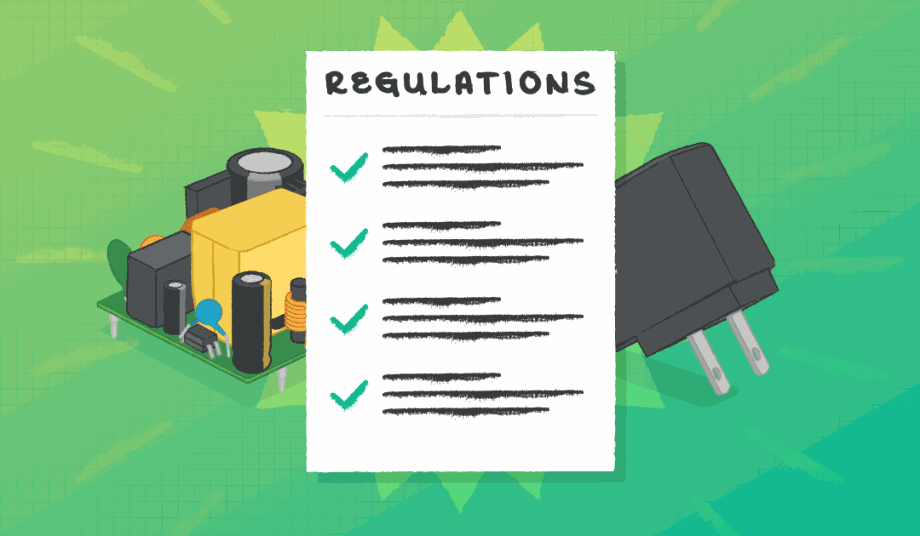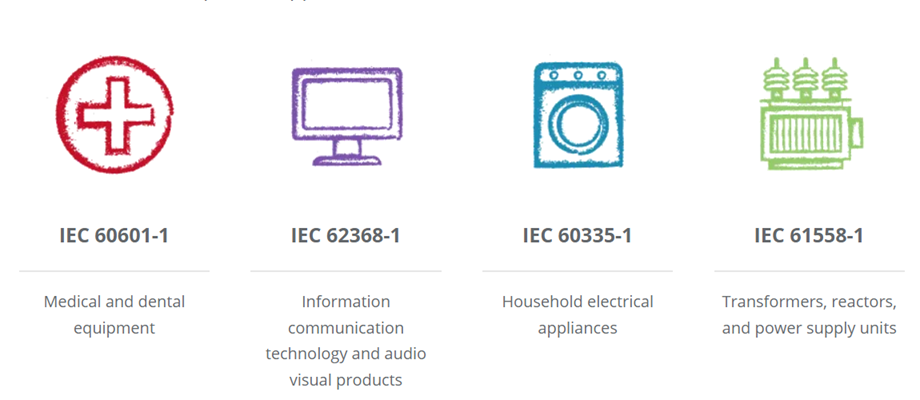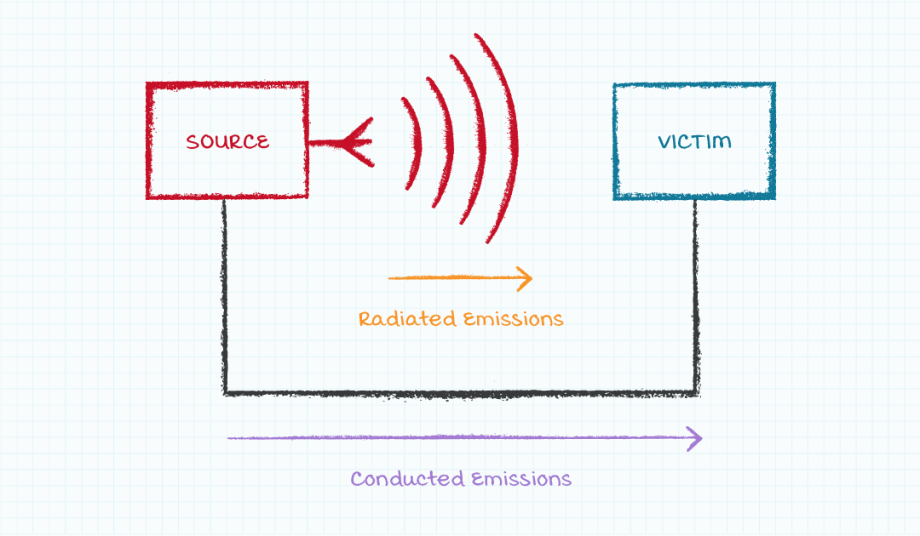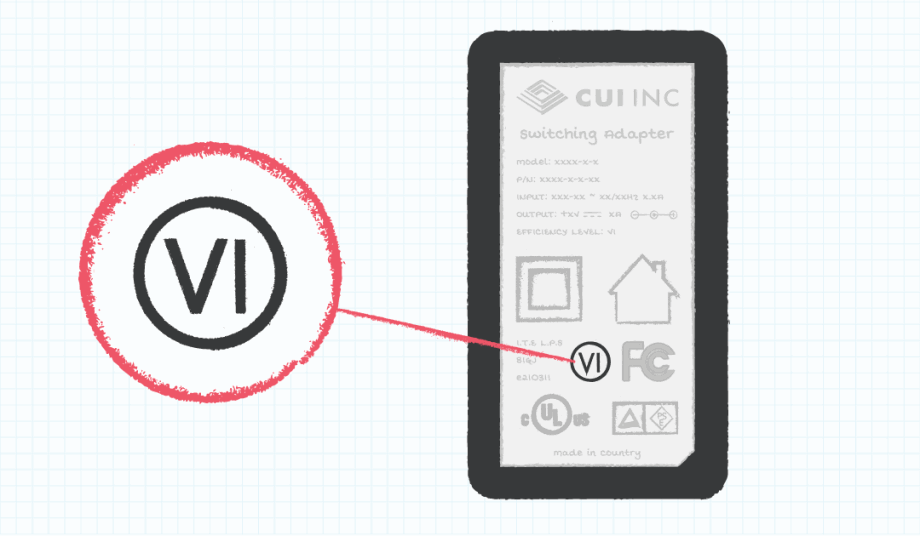How to Manage Regulations for Power Supplies
How to Manage Regulations for Power Supplies


Understanding which international regulations apply to your power supply can be challenging. CUI breaks down universal safety standards and how regulations apply to your design.
Regulations from governing bodies seem to exist throughout our lives, and regulations regarding power supplies for electronic equipment are no exception. Most regulations addressing power supplies can be placed in one of three categories:
The primary international organization which creates regulatory safety standards for electronic products is the IEC (International Electrotechnical Commission). Different global markets typically accept, modify, and then accept the standards published by the IEC. Regulatory standard IEC 62368-1 is an example of a recently released standard that has been adapted to international markets. This standard applies to equipment used in the ICT (Information and Communications Technology) and AV (Audio Video) markets. The United States has adopted version UL 62368-1 of the IEC standard, while the EU has adopted version EN 62368-1 of the same standards. Multiple editions and iterations of the IEC standards are often created in addition to the geographic and geopolitical variations.
When selecting a power supply, some obvious requirement parameters include the input and output voltages and the output current. Other equally important but perhaps less obvious requirements to understand when selecting a power supply are the safety standards the power supply will be required to meet. Examples of common safety standards are shown in the diagram below.
As discussed above, there can be variations in the regulations as different countries adopt them. Thus, it is essential to understand in which countries a product will be sold to ensure the power supplies meet the regulations that are specific to those countries. Most regulatory certification organizations, such as UL (Underwriters Laboratories) and TUV (Technischer Überwachungsverein), are intimately familiar with the various versions of the many regulatory specifications and can provide guidance to ensure the proper tests are performed on the power supplies. After the regulatory certification testing is completed, the certification organizations will issue a CB (Certification Body) report. The CB report contains information describing the tests and measurements performed and the associated results from those tests and measurements. This CB report, and the resultant certification documents, can be provided to the regulatory certification agency of the power supply customer to simplify their activities when the system is tested for regulatory compliance.
While the previously mentioned IEC standards relate to preventing fires and hazardous voltages to humans, the EMI (Electromagnetic Interference) and EMC (Electromagnetic Compatibility) standards ensure that electronic products ‘play well with each other’ as relates to electrical noise and interference. While there is no single standards organization for EMI and EMC concerns, there is awareness in most countries, so the standards are similar. In the US, the governing organization for EMI and EMC is the FCC (Federal Communications Commission), while in the EU, the governing document is the EMC Directive (2014/30/EU). Most countries outside the US and EU use a variation on the EMI and EMC standards from either the US or the EU.
The following are some of the common EMI and EMC regulatory standards.
The third set of standards mentioned at the beginning of this discussion relates to power conversion efficiency. Power conversion efficiency relates to the amount of wasted heat from the power supply that must be dissipated during the operation of the product. Product development teams often are interested in high power conversion efficiency to improve the system reliability and enable the design of smaller, lighter weight, and quieter products. Governmental regulations also address power conversion efficiency in the form of ‘ghost power.’ This is the power consumed by a power supply when there is no electrical load, such as when a phone charger is plugged into the ac outlet, but no phone is being charged. Many of the power conversion efficiency regulations apply primarily to external power supplies.
One of the first governmental bodies to implement power supply conversion efficiency requirements was the CEC (California Energy Commission) in 2004. There have been numerous versions of power supply conversion efficiency requirements created since 2004, some of them being Energy Star, managed by the US EPA (Environmental Protection Agency), and more recently the IEMP (International Efficiency Marking Protocol), which is implemented in conjunction with the US DOE (Department of Energy). The IEMP standards are identified by Roman numerals; the current version of the standard as mandated in the US by the DOE is Level VI.
The US power conversion efficiency levels are harmonized in Canada, while the EU has recently adopted Ecodesign 2019/1782, also known as Commission Regulation (EU) 2019/1782. The EU regulations are harmonized with DOE Level VI and require additional documentation and reporting. The power conversion efficiency requirements are not always obvious when products are to be sold outside of the US, Canada, or the EU. Perhaps the best method to ensure compliance with power conversion efficiency regulations is to work with a reputable power supply vendor.
Although there are many regulatory requirements regarding power supply safety, compatibility, and power conversion efficiency, the product design team members do not need to be experts in the subject themselves. By working with an experienced power supply vendor, a product design team can ensure their power supply solution will be appropriate to meet the many regulatory requirements.
Andrew Johnson is a director of product manager at CUI Inc.
- Safety standards
- EMI/EMC standards
- Efficiency standards
Universal Safety Standards
The primary international organization which creates regulatory safety standards for electronic products is the IEC (International Electrotechnical Commission). Different global markets typically accept, modify, and then accept the standards published by the IEC. Regulatory standard IEC 62368-1 is an example of a recently released standard that has been adapted to international markets. This standard applies to equipment used in the ICT (Information and Communications Technology) and AV (Audio Video) markets. The United States has adopted version UL 62368-1 of the IEC standard, while the EU has adopted version EN 62368-1 of the same standards. Multiple editions and iterations of the IEC standards are often created in addition to the geographic and geopolitical variations.
When selecting a power supply, some obvious requirement parameters include the input and output voltages and the output current. Other equally important but perhaps less obvious requirements to understand when selecting a power supply are the safety standards the power supply will be required to meet. Examples of common safety standards are shown in the diagram below.
As discussed above, there can be variations in the regulations as different countries adopt them. Thus, it is essential to understand in which countries a product will be sold to ensure the power supplies meet the regulations that are specific to those countries. Most regulatory certification organizations, such as UL (Underwriters Laboratories) and TUV (Technischer Überwachungsverein), are intimately familiar with the various versions of the many regulatory specifications and can provide guidance to ensure the proper tests are performed on the power supplies. After the regulatory certification testing is completed, the certification organizations will issue a CB (Certification Body) report. The CB report contains information describing the tests and measurements performed and the associated results from those tests and measurements. This CB report, and the resultant certification documents, can be provided to the regulatory certification agency of the power supply customer to simplify their activities when the system is tested for regulatory compliance.
Understanding EMI/EMC Standards
While the previously mentioned IEC standards relate to preventing fires and hazardous voltages to humans, the EMI (Electromagnetic Interference) and EMC (Electromagnetic Compatibility) standards ensure that electronic products ‘play well with each other’ as relates to electrical noise and interference. While there is no single standards organization for EMI and EMC concerns, there is awareness in most countries, so the standards are similar. In the US, the governing organization for EMI and EMC is the FCC (Federal Communications Commission), while in the EU, the governing document is the EMC Directive (2014/30/EU). Most countries outside the US and EU use a variation on the EMI and EMC standards from either the US or the EU.
The following are some of the common EMI and EMC regulatory standards.
- CISPR 32: Information Technology Equipment - Radio Disturbance Characteristic limits
- CISPR 24: Information technology equipment - Immunity characteristic limits
- IEC 61000 series of EMI and EMC specifications
- EN 55032: European limits of radio disturbance characteristics for IT equipment
- EN 55024: European immunity requirements for IT equipment
- FCC Part 15: US regulations for radio-frequency emissions and immunity
Efficiency Standards
The third set of standards mentioned at the beginning of this discussion relates to power conversion efficiency. Power conversion efficiency relates to the amount of wasted heat from the power supply that must be dissipated during the operation of the product. Product development teams often are interested in high power conversion efficiency to improve the system reliability and enable the design of smaller, lighter weight, and quieter products. Governmental regulations also address power conversion efficiency in the form of ‘ghost power.’ This is the power consumed by a power supply when there is no electrical load, such as when a phone charger is plugged into the ac outlet, but no phone is being charged. Many of the power conversion efficiency regulations apply primarily to external power supplies.
One of the first governmental bodies to implement power supply conversion efficiency requirements was the CEC (California Energy Commission) in 2004. There have been numerous versions of power supply conversion efficiency requirements created since 2004, some of them being Energy Star, managed by the US EPA (Environmental Protection Agency), and more recently the IEMP (International Efficiency Marking Protocol), which is implemented in conjunction with the US DOE (Department of Energy). The IEMP standards are identified by Roman numerals; the current version of the standard as mandated in the US by the DOE is Level VI.
The US power conversion efficiency levels are harmonized in Canada, while the EU has recently adopted Ecodesign 2019/1782, also known as Commission Regulation (EU) 2019/1782. The EU regulations are harmonized with DOE Level VI and require additional documentation and reporting. The power conversion efficiency requirements are not always obvious when products are to be sold outside of the US, Canada, or the EU. Perhaps the best method to ensure compliance with power conversion efficiency regulations is to work with a reputable power supply vendor.
Although there are many regulatory requirements regarding power supply safety, compatibility, and power conversion efficiency, the product design team members do not need to be experts in the subject themselves. By working with an experienced power supply vendor, a product design team can ensure their power supply solution will be appropriate to meet the many regulatory requirements.
Andrew Johnson is a director of product manager at CUI Inc.









